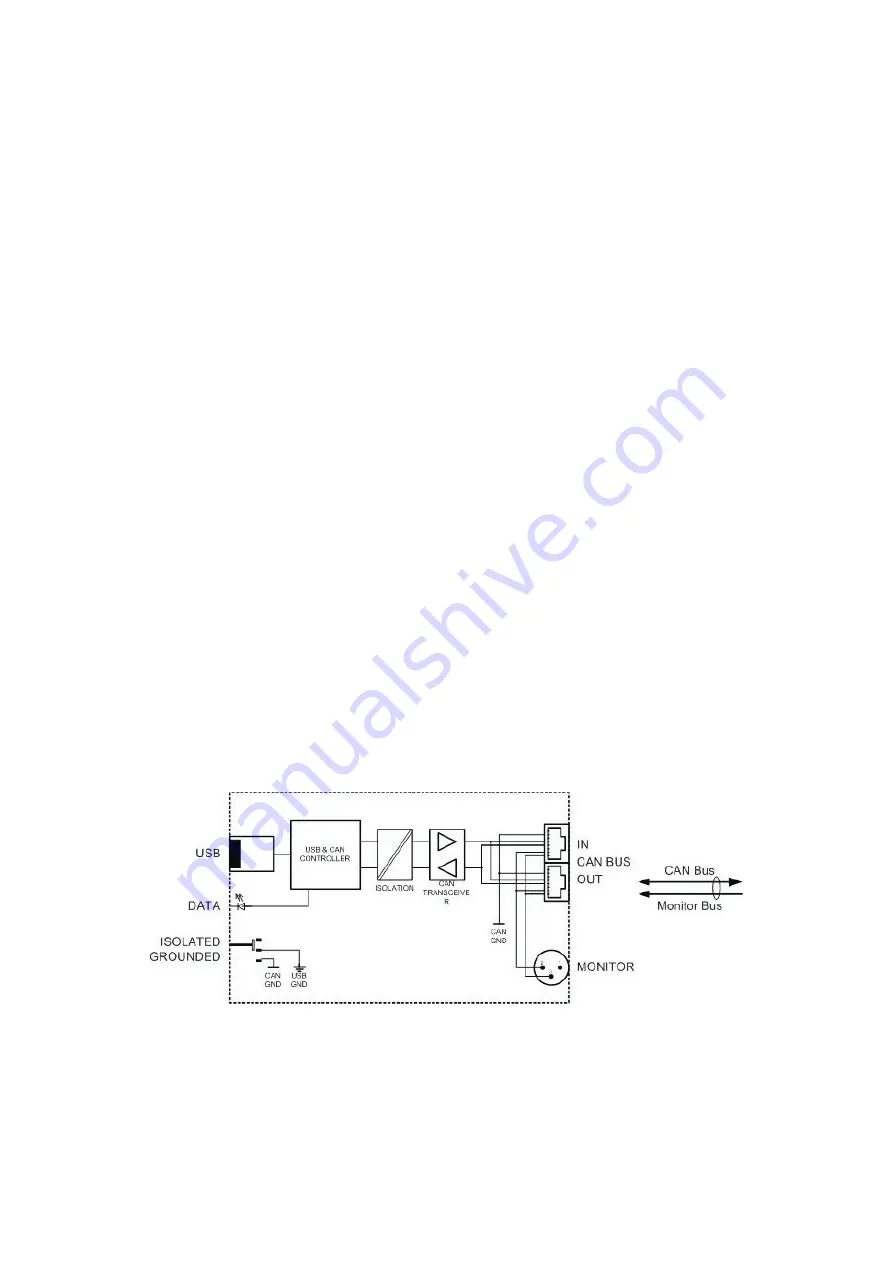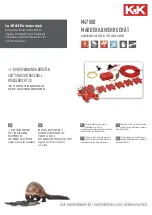
The ISOLATED / GROUNDED switch located on the UCC1’s front panel allows bridging this galvanic
isolation putting the CAN-bus of the UCC1 on circuitry ground potential.
The CAN-bus should normally be referenced to the ground potential at one single point in the network.
Set the switch to its GROUNDED-position when only one UCC1 is used in a single CAN-bus network.
When employing several UCC1s in a CAN-bus network, setting the ISOLATED / GROUNDED switch of
one UCC1 to GROUNDED while leaving the switches of all other UCC1s in the ISOLATED-position is
recommended.
5. Monitor Bus
Next to the CAN-bus signal, network cabling also holds the balanced audio-monitor signal for monitoring
the power amp inputs and outputs. This monitor-bus allows software-controlled monitoring of the input and
output signals of all power amps that are included in the remote network, without the need for additional
wiring. The monitor signal is present at the UCC1’s XLR-type MONITOR Output connector for further
distribution to (e.g.) a mixing console to be monitored via headphones or an active monitor speaker
connected.
6. Technical Information
6.1 The UCC1 USB-CAN Converter
The UCC1 is an USB-to-CAN adapter, which offers the possibility to easily include any PC or Notebook
computer that is equipped with an USB-port in an existing CAN-network. The USB driver, which is part of
the IRIS-Net-software is the only thing needed for triggering. The UCC1 gets its power supply from the PC’s
USB-port, so that no external power supply unit is necessary.
The following block diagram shows the UCC1’s internal structure with USB-port and controller on the one
side and the CAN-bus interface with CAN-transceiver component and galvanic separation on the other
side. The controller is responsible for the data format conversion between USB-port and CAN-bus, allowing
data rates of up to 500 kbit/s.
Next to the CAN-bus, the network cabling also holds the monitor bus, which serves for monitoring the input
or output audio signals of all amplifiers that are included in the network. This audio signal is present at the
UCC1’s XLR-type MONITOR Output connector to provide trouble-free connection to a mixer input or an
additional amplifier.
Fig. 7: UCC1 Block Diagram
The CAN-bus port of the UCC1 (CAN BUS IN / OUT) is carried out via two Neutrik EtherCon connectors
to ensure most secure and reliably safe RJ-45 connections even under most wearing conditions. The
EtherCon connector series has been specially designed for use in ProAudio and On-Stage applications.
Matching Neutrik plug-type – NE8MC – connectors are also available.
23
Summary of Contents for UCC 1
Page 1: ...UCC1 USB CAN CONVERTER Bedienungsanleitung Owner s Manual Mode d emploi ...
Page 14: ...14 ...
Page 15: ...15 UCC1 USB CAN CONVERTER Owner s Manual ...
Page 28: ...28 ...
Page 29: ...UCC1 USB CAN CONVERTER Mode d emploi 29 ...
Page 42: ...Notizen Notes 42 ...
Page 43: ...Notizen Notes 43 ...
















































